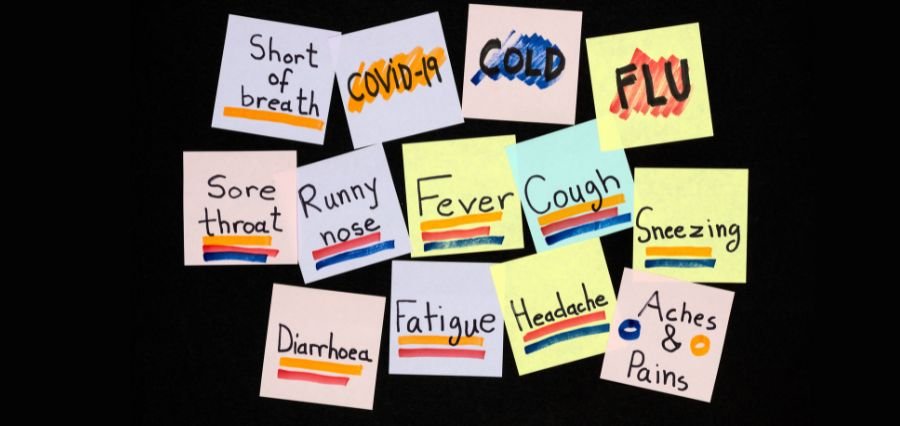The global struggle against COVID-19 entered its fifth year, and while vaccines, treatments, and public health measures have evolved significantly, the virus continued to mutate. In 2025, health care providers are faced with new challenges since COVID diseases exhibit shifting patterns of symptoms. All these trends are critical in the context of diagnosis, treatment, and control.
This piece addresses the most common COVID symptoms of 2025, the dominant variants, and real-world guidance for clinicians and healthcare facilities.
The Evolving Pattern of COVID Symptoms
Since its first outbreak in 2019, SARS-CoV-2 has mutated numerous times. Even though the virulence of the virus has mostly decreased with immunity and treatments, its transmission and mutation capacity continue to be a major public health concern. With every emerging new strain, there is a change in symptom presentations, which requires constant attention on the part of health care providers.
The most frequently reported COVID Symptoms during 2025 are:
- Sore throat
- Persistent cough
- Runny nose or nasal stuffiness
- Mild to moderate fever
- Headache
- Fatigue
- Occasional stomach upset
Those taste and smell losses of days past signaling a COVID case are behind us. COVID Symptoms today are more akin to a cold or flu, so it’s harder to catch them early.
Top 4 COVID Symptoms to Watch for in 2025
Let’s break down the four most frequent symptoms in recent COVID cases:
- Sore Throat
- Sore throat is now the most frequently reported first symptom. It usually occurs within the initial 1-2 days of illness and ranges from a mild scratch to intense pain.
- Why it matters: It gets mistaken for seasonal allergies or a cold, and therefore testing and isolation are postponed.
- Clinical hint: When a patient presents with a sore throat, fatigue, or fever, suggest urgent COVID testing, especially if they have been exposed to other infected people.
- Cough
- Dry and persistent cough still remains a good predictor of a COVID infection. However, some patients now acquire a productive cough, especially with the newer strains.
- Why it matters: Cough is contributory to community transmission, especially in the workplace and schools.
- Clinical tip: Exclude post-nasal drip or bacterial bronchitis in diagnosis. Test and isolate promptly.
- Nasal Congestion or Runny Nose
- Nasally, symptoms are surprisingly more prevalent in COVID cases today than during the initial pandemic years. Certain variants influence the upper respiratory system to a greater extent than the lung tissue, yielding cold-like symptoms.
- Why it matters: This shift enhances misdiagnosis as allergies or common flu.
- Clinical tip: Always consider the patient’s combination of symptoms, never one symptom by itself, unless:
If accompanied by cough or fatigue, rule out a COVID test.
- Mild Fever
- Fever is still a hallmark symptom, but often lower-grade than in earlier COVID waves, as most patients have temperatures between 99.5°F (37.5°C) and 101°F (38.3°C).
- Why it matters: Fever is an indicator of the body’s immune response and must not be considered lightly, even if mild.
- Clinical tip: Advise patients to steer clear of self-medication before consulting a healthcare professional. Monitoring of fever for 24–48 hours will confirm or rule out an instance of COVID.
How COVID Variants in 2025 Impact COVID Symptoms Presentation
By 2025, dominant variants such as Omicron subvariants XBB.3 and BA.4.6 have a shortened incubation period and faster symptom onset compared to what dominated in the past. These new variants tend to infect the upper respiratory tract and not deep lung tissue, and that is why patients have more minor, influenza-like symptoms.
Some observations of interest:
- Children and teenagers usually have only mild congestion and tiredness.
- Older adults may get worsening of underlying conditions such as asthma or COPD with even mild COVID symptoms.
- Vaccinated individuals have fewer and less severe symptoms but are not resistant to infection.
2025 Diagnosis of COVID: Best Practices
With more nonspecific and less severe symptoms being at center stage, diagnosis is tricky. The following are the updated best practices:
- Use a combination of rapid antigen tests and symptom screening.
- Always consider a patient’s history of exposure and vaccination.
- Recommend testing for even mild symptoms, especially in high-risk populations or healthcare settings.
COVID Case Management in 2025
COVID cases in 2025 are largely mild and moderate in severity and can be managed at home. However, special care should be taken to carefully watch for complications, especially in the high-risk group.
Home treatment recommendations:
- Quarantine for at least 5–7 days or until symptoms resolve.
- Rest and hydrate.
- Employ antipyretics like acetaminophen in case of fever.
- Avoid contact with high-risk individuals after recovery.
When to heighten care:
- Difficulty breathing
- Prolonged high fever lasting beyond 72 hours
- Chest pain or confusion
- Oxygen saturation below 94% on room air
Overlap in symptoms is high, but COVID will be more likely to have fatigue, fever, and a prolonged cough compared to the common cold.
Last Thoughts: Stay Alert, Stay Updated
The COVID-19 virus will probably be around for a while, but knowing how it evolves gives medical professionals the power to treat it better. COVID symptoms in 2025 are frequently less severe but more difficult to recognize, which means active screening and vigilance are a must.
COVID or Common Cold? How to Tell the Difference
| Symptom | COVID-19 (2025) | Common Cold |
| Fever | Often mild | Rare |
| Sore Throat | Common | Common |
| Cough | Persistent | Mild to moderate |
| Runny Nose | Common | Common |
| Loss of Smell | Rare | Rare |
| Fatigue | Moderate | Mild |
As medical professionals, being informed about new variants, symptom patterns, and treatment guidelines keeps us ahead of, not behind, COVID cases.
Key Takeaways:
- Most common 2025 COVID symptoms are low-grade fever, runny nose, sore throat, and cough.
- Symptomology now mimics the common cold, hence making it difficult to diagnose.
- Care in symptom and testing vigilance has to be maintained to prevent spread.
- Even mild symptoms have to be addressed seriously, especially in healthcare settings.
Read More – Pune Fertility Treatment Options for All





